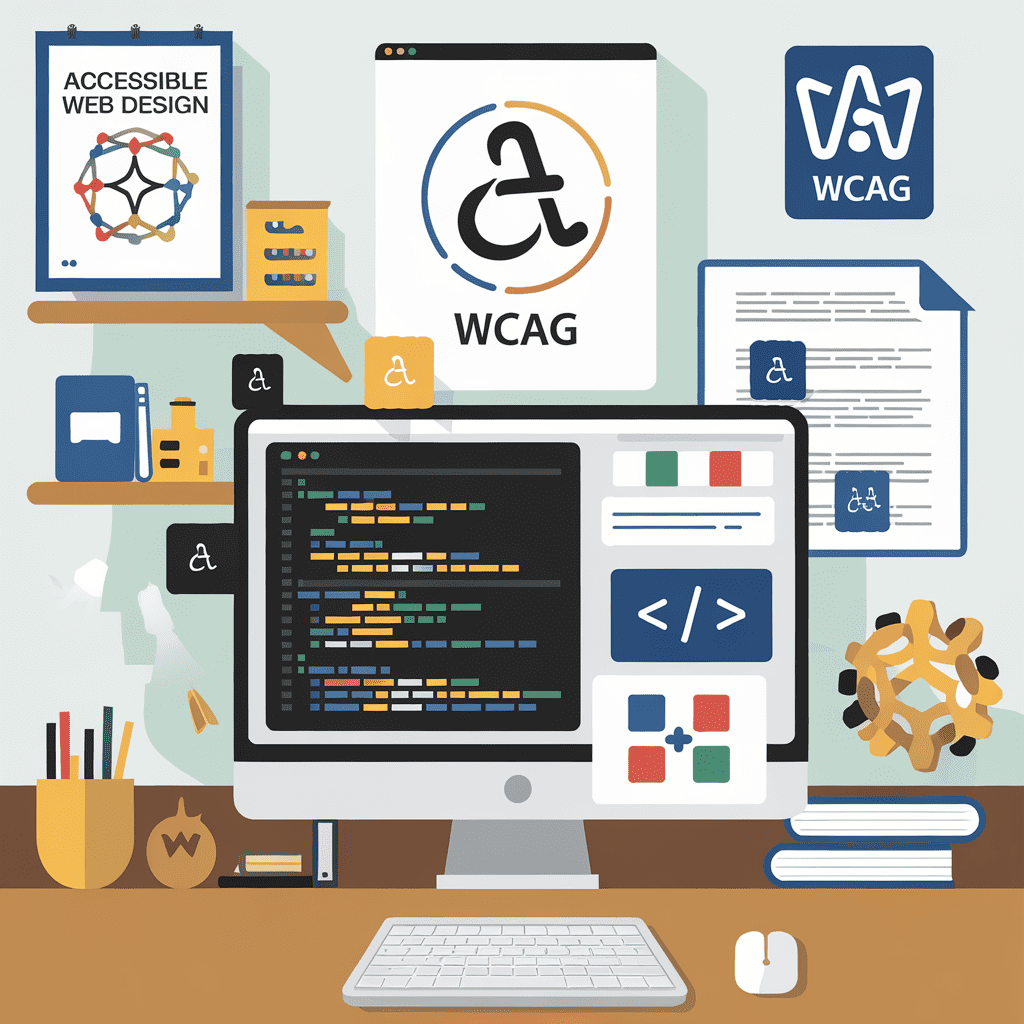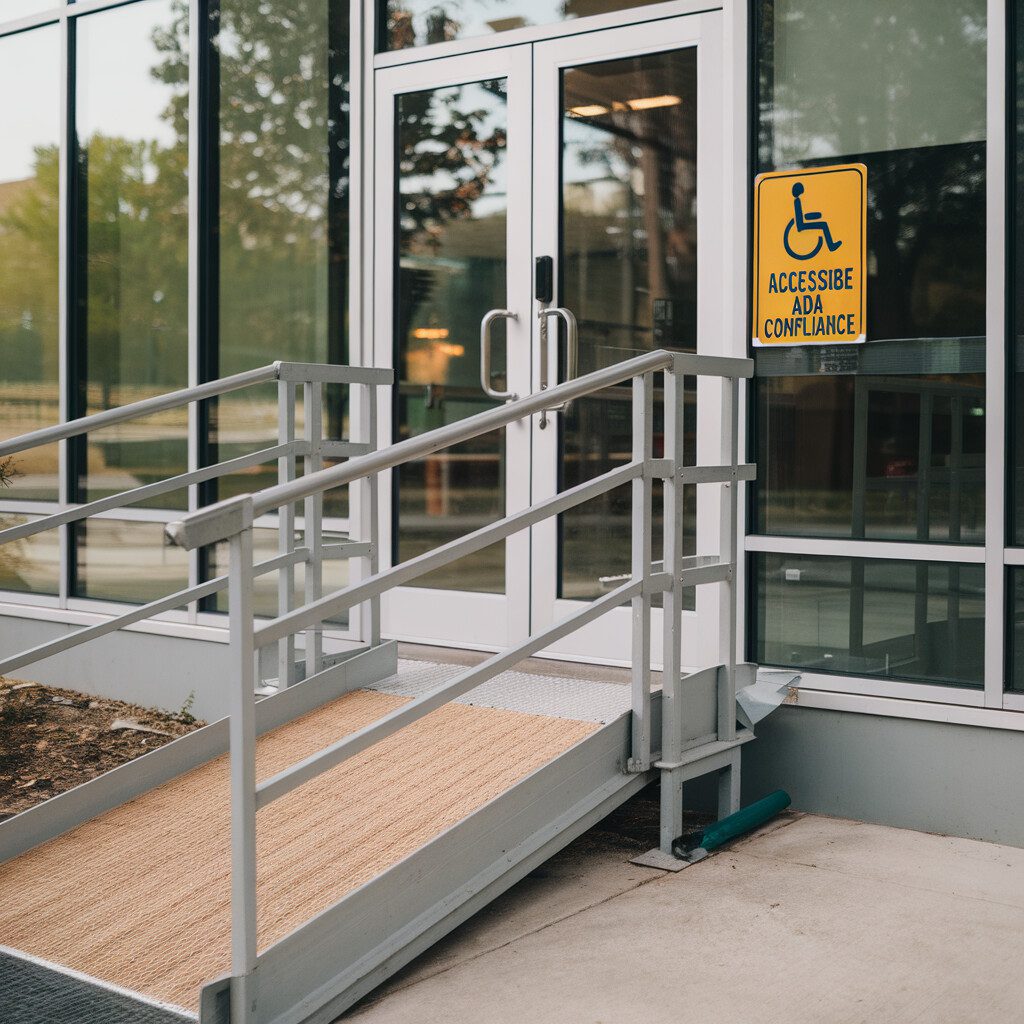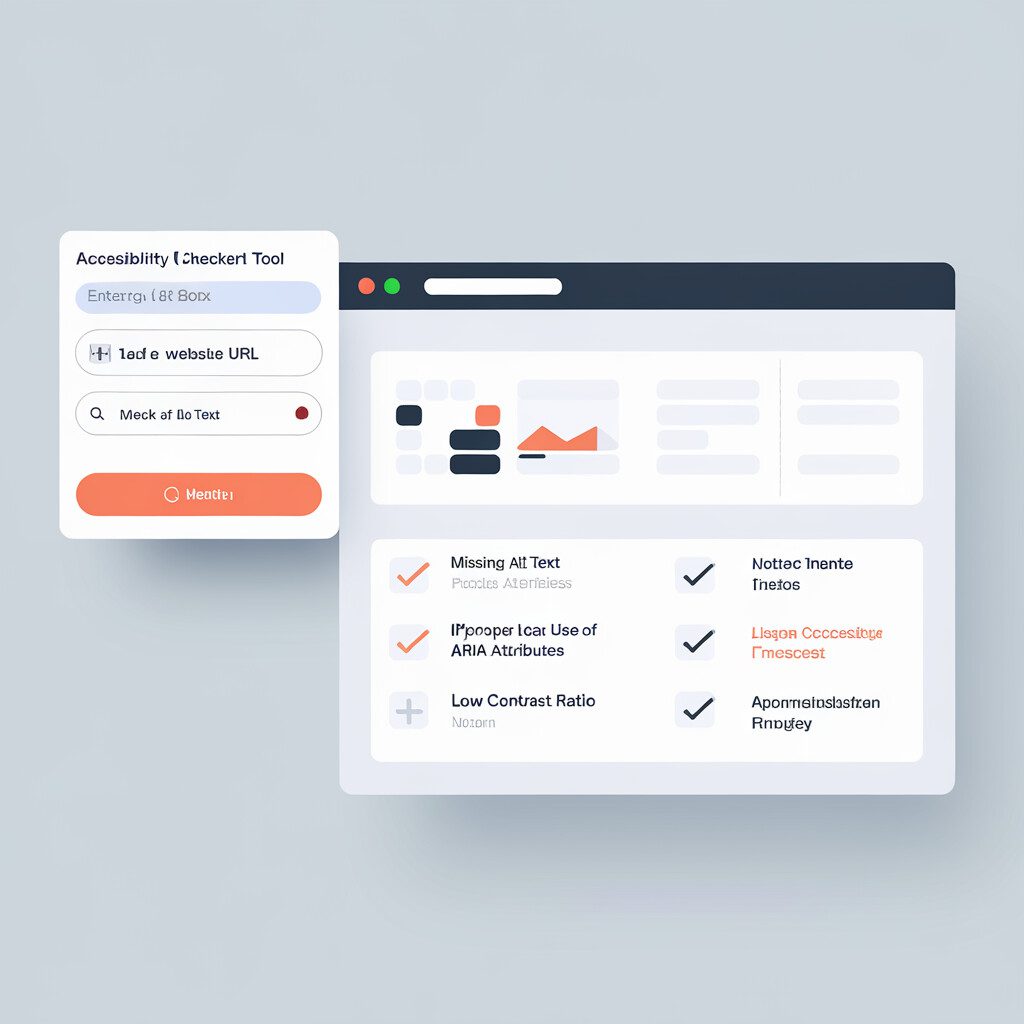
Hey there, accessibility enthusiast! Ever wondered about the larger story of accessible coding practices – that rich tapestry woven from bits of hard-fought successes, useful hints, and believe-it-or-not challenges? Of course, you have! And guess what? You're not alone. In the thrilling world of technology, one topic has been stealing the limelight recently, "Accessible coding practices". And for good reason – unpacking this subject is like opening a treasure trove of real-world experiences, brimming with valuable lessons drawn from both the towering peaks of success and the treacherous trenches of difficulties. Imagine this space as your backstage pass to the riveting world of accessible coding practices, presenting a behind-the-scenes look at the myriad challenges that professionals routinely juggle and the strategies they brave with nimble finesse. We’re talking eye-opening results, transformative impact, and the hard-won wisdom that paints a vivid picture of what the journey entails. With a strong spirit of community building infusing every line, let's walk this enlightening path together, excavating how our often unsung dev heroes streamline the accessibility canal while boosting usability and equal access rights – all through innovative coding practices. Grab your favourite geeky mug, because this is all about living and breathing accessible coding practices – poured out from the remarkable heart of the tech community to fuel your curiosity.
Background and Overview of Accessible Coding Practices

The clarion call of digital inclusivity has put "accessible coding practices" at the forefront of the tech conversation. Intuitively, it resonates as a noble common good; but as Bartleby from Melville’s renowned text might point out, in practice, it can turn from an ‘I would prefer not to,' into ‘Where do I even begin?!' Ever melted into a couch too deep and cushy, struggling to get out? Well, that's what the web can feel like for people with disabilities when coding isn't accessibility-minded. Take the launching of a neighborhood's new online grocery store. The user interface is sleek, the response time is unparalleled, and yet, sales are subpar. A usability test reveals that the dropdown menus prove a challenge for keyboard users, negating the appeal of buying local, quality produce from the comfort of their homes. Boom! Impact-dimming hurdles like these, seemingly trivial for some, pose significant accessibility issues for others that are avoidable through accessible coding practices. And how about that dazzling ticket website, making phantom Phantom of the Opera in the comfort of your living room just one click away? It's paradise, except that the gorgeous visuals relied upon to navigate the platform become a virtual bonfire when they aren't supported with alternative text descriptions or the suitable contrast ratio. That's a major "lights out" moment. Thus, far from out-of-reach jargon, issues accessible coding practices address are real-world challenges demanding our attention. So, break out those hummable coding fingers; you're here because you're genuinely invested in creating a web that’s welcoming for all. Your key tools— ARlA or Accessible Rich Internet Applications, WCAG or Web Content Accessibility Guidelines, Accessible PDFs, and a respect for contrast ratios are the cogs to the wheel of making this digital world inclusive. As we delve deeper into the nuances of accessible coding practices, remember; you're contributing to making the internet, a place we virtually live in, approachable for everyone. After all, genuine inclusivity starts from our screens, don't you think?
Identifying Challenges in Implementing Accessible Coding Practices
Continuing our exploration into the labyrinth of technology, let's dive into the gritty realities of implementing accessible coding practices. Picture, if you will, an ambitious tech firm A1Tech – keen to offer an inclusive user experience but hit with a couple of head-scratchers. Firstly, despite understanding the promise of ARIA (Accessible Rich Internet Applications) and the guiding light of WCAG (Web Content Accessibility Guidelines) to illuminate the way, poor documentation and a lack of knowledge can be stumbling blocks. The challenge is twofold, knowing what needs to be done and understanding how to apply it correctly. Remember that time, you tried to set up the Wi-Fi without the manual? Yeah, it's a bit like that. Focused on providing Equal Access, A1Tech team faced another challenge with managing accessibility on dynamic web pages. With fluctuations in contrast ratios, maintaining Accessible Web Design became a complex replugging game—a bit like playing Tetris in a rocking boat. And it’s not just about those pretty visuals; the devil’s in the details, folks. Ever thought about alt text? You know, that descriptive text explaining images. Well, badly labeled alt-text can be a bottomless pit that will sink website traffic faster than an elephant in quicksand can ruin your picnic. Sounds tedious, but dodging this pitfall seriously affects your site’s usability and turns 'Accessible coding practices' from an intangible concept into real-world actions. Without a doubt, the integration of accessible practices into coding sounds tougher than unpicking a knotted shoelace, but trust me, overcoming these challenges is another stepping stone in our path to community-building where technology bridges gaps. “Once a hurdle, now a step" – hang tight as we dare to dive deeper into the solution, unveiling the wizardry to transform murky web spaces into shining beacons of accessibility. Paw your way forward, fearless readers; we've got your back.
Strategies for Enhancing Accessibility in Coding
Carrying the knowledge from our previous chat, let's dive into the thick of it. Imagine crafting a website like orchestrating a symphony. Each element, from images to texts and buttons, should create a harmonious flow, where anyone, including folks with accessibility needs, can appreciate the music. But alas! More often than not, accessibility takes a back seat during the coding phase, turning this orchestra into a cacophony. Cue in our hero: Accessible coding practices. Take the case of an eCommerce venture, let's call it 'ExciteShopper'. Initially, they struggled with customer dropout rates and reduced website traffic due to glaring accessibility issues. The website was pretty but incomprehensible to screen readers, thereby alienating visually impaired users. To turn this situation around, they leaned into accessible coding practices. The technical wizards at ExciteShopper embraced the ARIA (Accessible Rich Internet Applications) guidelines and took the initiative to add Alt Text (Alternative Text) to images and links ensuring screen readers could interpret and voice the content accurately. They ensured a strong Contrast Ratio for fonts and incorporated Accessible PDFs that benefitted customers with diverse abilities. Following WCAG (Web Content Accessibility Guidelines), they tweaked their codes, introduced keyboard-friendly navigation and significantly, made the shopping cart section more accessible. Calling it a game-changer would be an understatement. Not only did traffic increase—with even search engines favoring the inclusiveness—but overall usability, too, skyrocketed. ExciteShopper triumphed in overcoming barriers and building a larger, diverse, and thus more profitable community. So, folks, let's heed this melody from the 'ExciteShopper' orchestra. Let's ensure that while coding we keep in mind that accessibility isn't just a fancy buzzword, but a real-time strategy for sustained success on the web. Let’s turn the tide using accessible coding practices to create positive ripples of change. Why not give it a shot?
Results and Impact of Accessible Coding Practices
Word on the street talks about "accessible coding practices" as Fresco Book's secret weapon. Awash with colorful images, ranging from sassily-titled cookbooks to romantic imagery, the bookstore's been buzzing about a diverse community of visually-impaired bookworms freely browsing, choosing, and purchasing their favorite reads. Is it possible that our tech peers have finally unlocked the treasure chest of digital inclusivity with accessible coding? The accessible web treehouse did, and here's where this gets interesting. When Fresco initially swept through their coding and design, adopting accessibility principles, the team met resistance. Brows furrowed over the need for contrast ratios. Hearts quivered at the concept of alternative text for each picture. The phantom challenge of digitally making the experience accessible to all loomed large, as a stumbling block rather than an opportunity. A simple shift redefined the trials of this tech journey. Imagine if surfers viewed every approaching wave as a hurdle instead of a joy ride? They'd miss the fun, right? The trick lay in seeing accessible coding as a path to build a community around love for ewoks and beautifully illustrated cookbooks. Opting for accessible coding practices, Fresco attracted a customer base with 285 million visually-impaired people worldwide. That's a crowd three times the UK population loyal to Fresco's ideals of bringing literature to everyone's fingertips. Diving yet deeper into seamless inclusivity, Fresco adopted ARIA (Accessible Rich Internet Applications) techniques, focusing on proper naming and role attributions. The result was a rocket uptick in site traffic. We're talking a boom town, glitteringly inviting to people with and without impairments alike. Embracing "accessible coding practices" is like running a charity marathon—you get fit, have fun, and end up contributing to a beautiful cause too. You foster an inclusive, enriched community responding to their needs while feeding your end of the goal. It's a memoir-worthy heroic saga, really, of tech's royal march towards greater inclusivity. Yes, navigating the waters of accessibility may feel a tad Sam vs. Gollum-ish at times. But remember, every powerful ring, or in this case, an enhanced user experience, needs a volley of fiery challenges to come into its real potential fully. Undeniably, accessible coding has become Fresco's secret sauce. EVT anyone?
Lessons Learned and Best Practices for Future Implementation
Carrying these profound lessons with us when developing future coding projects, we're determined to bolster our attempts toward embracing the 'Accessible coding practices'. If there's one thing to note about this journey toward digital inclusivity, it's that there's always more to learn about perfecting our approach. Let's use 'Alt Text' as an example. Implementing this usability feature in our online content was like trying to solve a jigsaw puzzle with no labels: somewhat exciting, filled with discovery, but also dauntingly unpredictable. Despite the occasional ambiguity, it's proven to be an absolute lifesaver for visually impaired users. It turns inaccessible image files into comprehensive content, broadening their experience on the digital platform—like offering someone a flashlight in a labyrinth. Intriguing, isn't it? Learning from our explorations and collaborations within the thriving tech community, tweaking the contrast ratio of our website design helped us facilitate accessible design practices. We channeled the electric enthusiasm you'd have when adjusting your favorite television set for an optimal 4k experience—brightness high, contrast on point, just right for a thrilling movie night. High reader satisfaction indeed became symbolic of our online platform's triumph. Our ARIA-partnered exploration revitalized our understanding of ‘Accessible coding practices’. Implementing ARIA roles was akin to playing a superhero video game, where the right choice of character abilities successfully navigates the challenging levels. In our case, the levels were accessibility hurdles, and our superhero action was embedding ARIA in the script. There was a time when accessible PDFs felt like the bane of our existence, but with patience and community support, we decoded its complex world. This journey screamed teamwork, patience, and constant learning—you know, something like assembling the perfect burger, each layer adding its savory essence. The end result was a well-cooked, accessible digital document most craved for. In conclusion, let’s carry forward the old but gold mantra, “learn, unlearn, relearn” as we update our Best Coding Practices' playbook. Working on these accessible coding practices has been both a marathon and a sprint. Remember, when it comes to making digital content accessible, you take it slow and steady—like savoring your favorite dessert one bite at a time—but also push yourself to adapt, fast. Doesn't that sound like an adventure waiting to unfold? Why not give it a shot and see the difference you can make!
Conclusion
Well, folks, ladies and gents, and elite 'webbies'—we're rounding the curve and crossing the finish line of our deep dive into accessible coding practices. What a ride it's been, huh? And we aren't just yapping about bumpy mouse clicks and tricky codes—we've journeyed from the heart-pounding challenges to the triumphant victories of turning a clunky, inaccessible piece of code into a silky smooth, accessible digital extravaganza. We know we've explored some tough terrains—defining accessibility in coding, grappling with real-world challenges, strategizing swift solutions, and demonstrating the juicy fruits of our labor. We've trotted the globe from the dark alleys of complexities and shone light on the hidden corners of accessibility. Remember those nifty strategies we discussed for enhancing accessibility in coding? And the thunderclap impact of dialing up the user experience and crafting a more inclusive cyber world? Time to snatch those key takeaways, stash them into your creative toolboxes, and watch your code spin into a maestro accessible masterpiece. This ain't just a wind-up—a call to arms, you may say. Seize these insights, sprinkle them over your coding practices, and I promise you'll hear the sweet symphony of accessible, usable code humming. Look at your challenges—don't shy away. Reflect, innovate, and iterate—because getting it right with accessible code isn't a finish line—it's a never-ending thrill of a journey. So cheers, code ninjas! Here's to squashing accessibility bugs, uplifting the web community together, and championing a future of unfettered digital access. Like intrepid explorers, let's venture onto our next accessibility quest, shall we?+
FAQ:
FAQ Section What are the common challenges in implementing accessible coding practices? Implementing accessible coding practices involves several challenges, predominantly surrounding knowledge gaps and misconceptions. Many developers lack understanding about the essence of accessibility, often perceiving it as a courtesy rather than a necessity. Moreover, the sheer number of accessibility standards and contrastive guidelines from various authorities like WAI-ARIA pose difficulties in attaining uniformity in approach. Overcoming these prevalent myths and creating a developing environment that values universal usability is the primary obstacle to effective implementation of accessible coding. What strategies are suggested to enhance accessibility in coding? Several strategies can enhance accessibility in coding. The foremost includes increased education and awareness among developers about the importance of inclusivity in effecting digital experiences. Allowing code language options that website visitors can choose according to their knowledge can create diverse languages ambiance. Other potential improvements include intuitive tabbing and keyboard navigation, detailed image alt text, high-contrast color schemes for visually impaired users, and easily scalable fonts for those with low vision or older users. In addition, adequate training would ensure proper use of semantic HTML and integrating ARIA landmarks. How visible are the results and impact of accessible coding practices? The benefits of accessible coding practices are multi-layered and, at times, intangible making them hard to quantify, but extremely consequential. A tangible advantage includes a boost in SEO since many accessibility strategies align with best practices for optimizing for search engines. Accessible sites also harbor an increased user base and improved user experience, thus driving higher rates of user engagement and conversion. In terms of intangibles, accessible coding supports principles of equal access and inclusivity in the digital landscape i.e., stark reduction in digital divide— a social impact that holds unfathomable significance.


